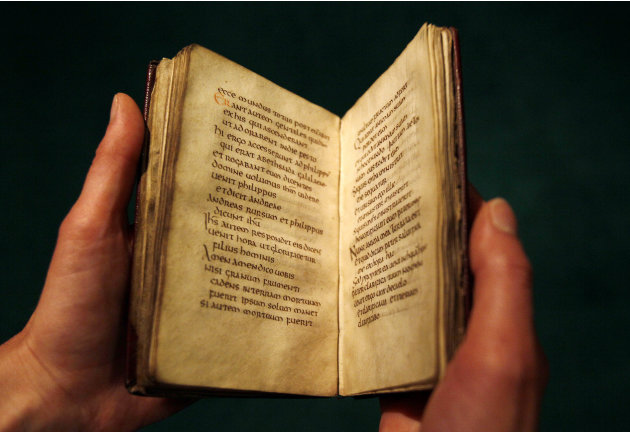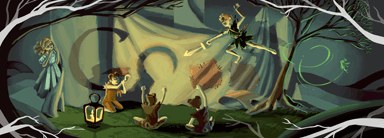
In this New York Times bestseller, Morgan leads readers on the spiritual odyssey of an American woman in the Australian outback. Is it a memoir or a work of fiction? It is up to you to decide.
While I was reading the book I really enjoyed it. There was adventure, there was humor, there was reflection and evaluation of one's past, present and future. It was a fun read and a lot of the lessons the protagonist learned along the way resonated with me, such as appreciating the experiences and not things, knowing that if you've helped one person you did well because you can only help one person at a time anyway, having faith in oneself, appreciating and developing one's talents, not taking more from nature than you need and always making sure you don't take everything. The book was written in a compelling way, it was fun and at the same time thought-provoking, and I breezed right through it even though I acknowledge that this is not one of the more skillfully-done book I've read so far. And then I finished reading, sat back as I usually do, and thought about it longer than usual because something was nagging at me. It took me a little while to figure out that I was having trouble with the fact that some of the events didn't really fit in with the whole, some of the actions of the aborigines went against the characterizations the author gave the tribe earlier in the narrative, and even the timeline was often flexible at best. So I decided to look up what the internet had to say about Marlo Morgan and her book.
A brief search later I learned that when this book was originally published in 1991 it was promoted as nonfiction and in the foreword the author says that the story the reader is about to discover is a true account of what happened to her in Australia. Years later however the book was republished as fiction and there are a few websites that post a wide variety of information intended to prove that the account is in fact fictitious. I have read the articles protesting it, as well as the account of the statement Ms. Morgan's made to the representatives of an Australian Aboriginal association acknowledging that her book is a work of fiction, I've even read about Ms. Morgan's Australian employer saying that her entire stay in Australia was spent working in his pharmacy and there was no time that she was absent from the city. Having read all this I find that more than anything this whole situation makes me sad and disappointed. If what Ms. Morgan writes about really happened then why are people so determined to discredit her and her book? And if her story is fiction then why did she make such an effort to make people believe that it's not? Why apologize to the Aboriginal representatives if there's nothing to apologize for? And if there is something to apologize for then why shrug it off and continue as if nothing happened?
Still I wanted to give her the benefit of the doubt. What if it was just haters doing their thing. Besides, I wanted to believe that the book is a memoir because the idea of a small society living in peace with themselves and the world around them, and not upsetting the natural balance of their environment is reassuring at a time when we keep hearing about climate change, whole species disappearing, pockets of land that has not been touched by humans becoming smaller and smaller. Now, I'm not a person who'll willingly move out of the city and live without electricity and plumbing to reduce my carbon footprint, but I will recycle and conserve water and power whenever I can, and I do believe that our actions affect the planet in a way that's ultimately detrimental to the length of time the human race will be able to enjoy themselves on Earth. After all, if one uses resources faster than they can be replenished sooner or later they will run out, and we have not yet figured out a way to make natural gas and oil or grow trees faster than it happens in nature.
As much as I wanted to believe in the authenticity of the story I couldn't get past aborigines speaking like urban dwellers, I couldn't reconcile the fact that the author seemed to go between needing an interpreter's help during the simplest of conversations and having complex discussions with members of the tribe without the interpreter present. I did not understand why everybody had names that meant something when translated, such as Secret Keeper and Female Healer, and even Ms. Morgan was given a name fashioned in the same way, but the man who served as interpreter was known simply as Ooota? I was also put off by frequent talk about how the author was losing weight on this walkabout, how pounds were literally melting off of her, and yet we have only relatively general depiction of her life with the tribe. I don't know about you, but I would much rather hear more about the daily life of a people so unlike my own than about how much thinner one American has gotten over the course of several months in the outback. There also seemed to be an undercurrent of "if you reject this account as truth then you're with those who say that people living without technology in the bush are lesser beings and that's just wrong", which grated on my nerves with its one-sidedness.
There is quite a bit of what can be referred to as "new age-y" talk about how all humans are linked to each other, how every experience is a lesson to be learned and if we don't learn it then we're presented with the same lesson again, about living in peace and harmony with ourselves, each other and the world around us, etc. In some things the author completely lost me, in others I agreed with her because ultimately there is tremendous personal value in actively pursuing areas in which one is talented, and being aware of our impact on the world has value for all mankind. These are all good messages, I just wish that Ms. Morgan hasn't cheapened them by trying to pass an account which I believe is fiction as something that really happened to her. All that said, I'm glad that I've read this book, if nothing else it made me think about the world and my place in it while I was reading and about people's goals and intentions when I finished it.
 BookExpo America (BEA) 2012 will be held June 5-7, 2012 at the Javits Center in New York City and a lot of people are already preparing for the trip. A friend of mine will be going for the first time (I so wish I was going with her!) and a while back began soliciting BEA newbie advice. I figure some of you might be going yourselves so here is a handful of links to blogs and sites with information on what to expect and how to prepare for the possibly overwhelming awesomeness that is BEA. Here goes!
BookExpo America (BEA) 2012 will be held June 5-7, 2012 at the Javits Center in New York City and a lot of people are already preparing for the trip. A friend of mine will be going for the first time (I so wish I was going with her!) and a while back began soliciting BEA newbie advice. I figure some of you might be going yourselves so here is a handful of links to blogs and sites with information on what to expect and how to prepare for the possibly overwhelming awesomeness that is BEA. Here goes!






